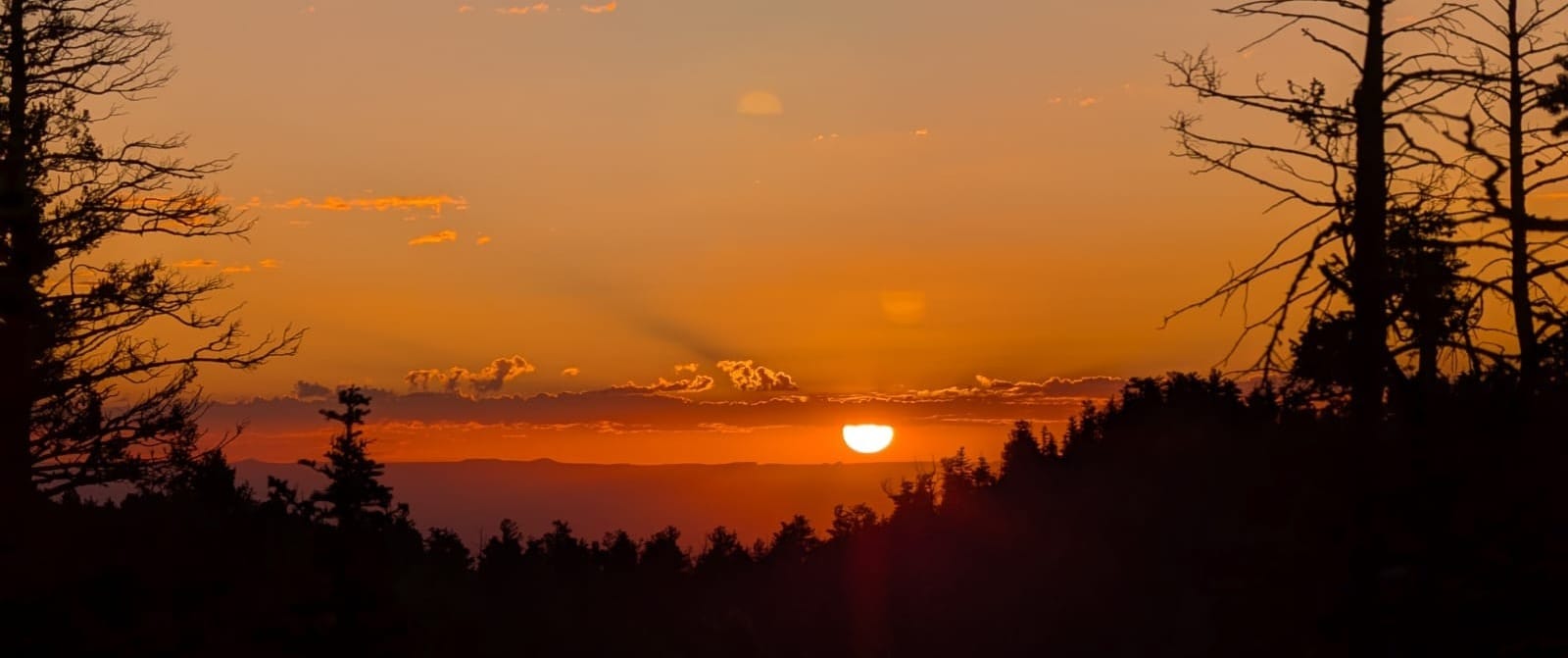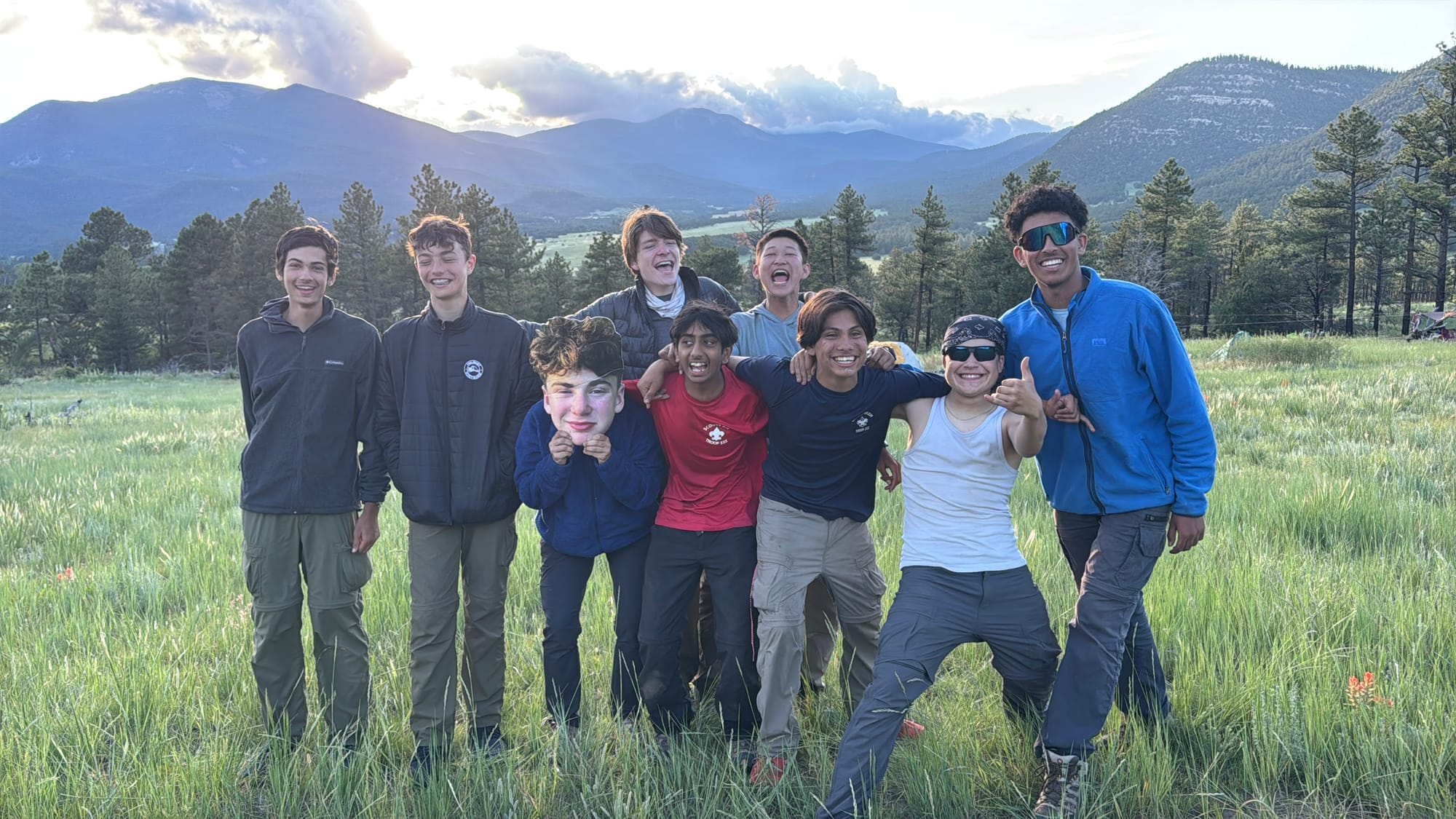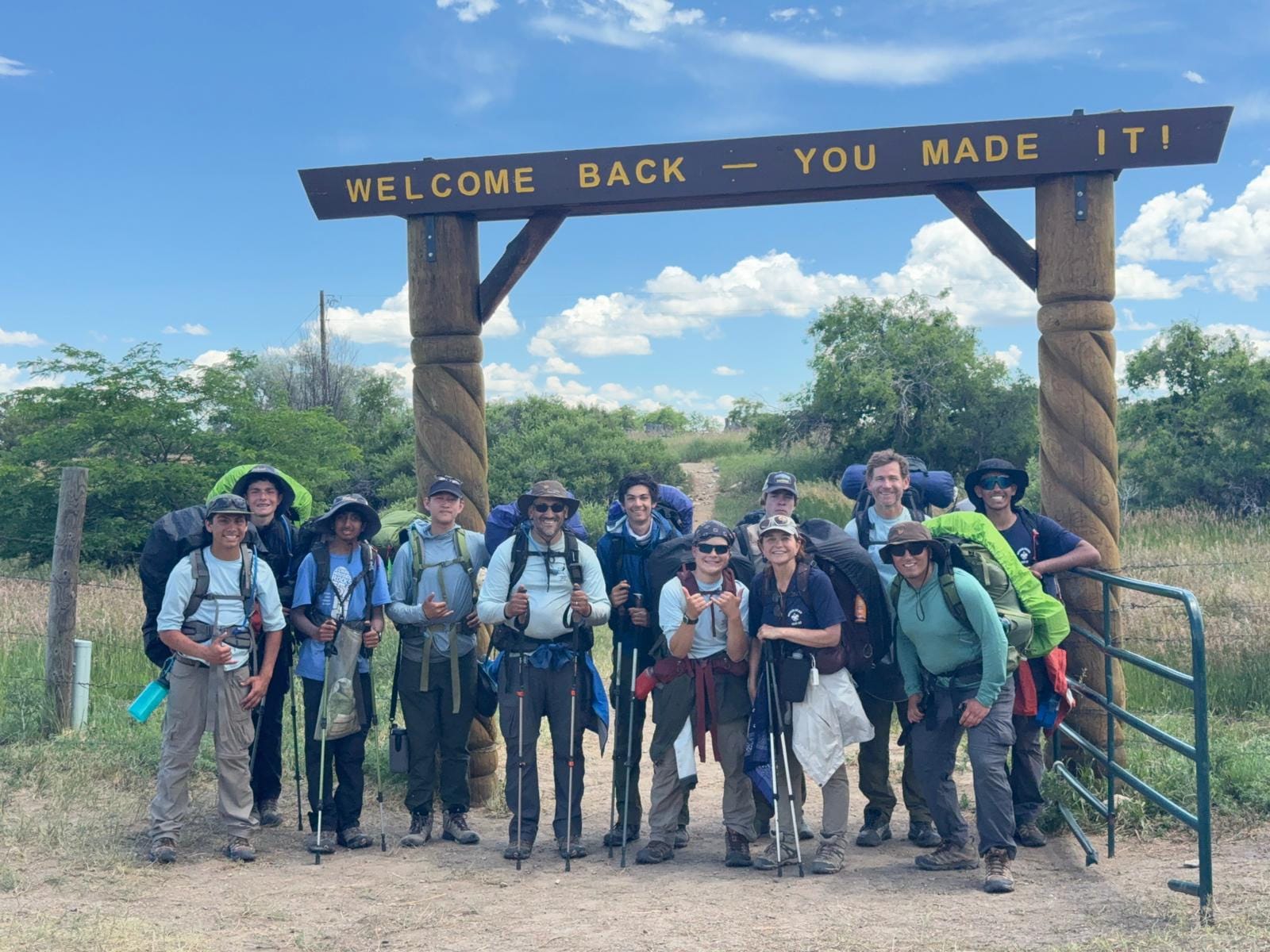Leading Through Philmont - A 12-Day Journey of Growth

By Soham Gupta, Philmont Crew Leader 2025, Troop 222
This reflection follows a 67-mile trek through Philmont Scout Ranch's backcountry on itinerary 12-9, completed over two weeks in summer 2025. The experience was made possible by dedicated adult advisors who provided safety oversight while allowing youth leadership to flourish, and by crew members who demonstrated that the best adventures are shared ones.
The Crew

Our expedition team brought together scouts and advisors who would become more than hiking partners over the next two weeks: Kidane Fife, Ethan Arguello, Lucas Cai, Jacob Atkins, Quinn Loftus, Raj Ghosh, Frank Callander, and myself. Our adult advisors, Ms. Kerri Atkins, Mr. Diego Sabio Paese, Mr. Steve Callander, and Mr. Debajit Ghosh, provided the safety net that allowed us to push our limits. Kidane served as our Chaplain's Aide, while Quinn took on the role of Wilderness Pledge Guia, ensuring we honored both the spiritual and environmental aspects of our journey. Ethan is a capable scout and friend who is always ready to lead and help out when necessary. Jacob served as our Recorder, documenting the trip and capturing the moments that would become our lasting memories. Raj, having recently become an adult scout, was in a unique position to both support me as a fellow scout and guide me with his young adult perspective. Frank brought creativity and helpfulness to our crew, always ready to step up as a leader when circumstances required it. I'm grateful to my entire crew for their commitment to all the preparatory hikes and outings despite busy schedules and time commitments. That preparation made our Philmont adventure possible.
Base Camp
The Journey Begins
We arrived at base camp at 10 AM, the excitement palpable as we formed our pack line and met our ranger, who would guide us for the first three days.
Dean Cow Camp
First Lessons in Leadership
Our objective was Dean Cow Camp. After taking the bus to the 9-mile trailhead, we began our hike through the 2018 wildfire recovery area. The sun was strong with limited tree cover. We climbed 700 feet to eat lunch at the top, where tuna and crackers never tasted so good. The gradual descent that followed gave us time to settle into our hiking rhythm until we arrived at camp around 5 PM, working efficiently to set up the dining fly before sunset.
New Dean Camp
Learning from Chaos
The morning of day three brought my first major learning opportunity. I had scheduled us to break camp before the 7 AM rock climbing program, but I hadn't given clear enough instructions. The result was an uncoordinated effort. Standing there, watching our planned departure become less organized than intended, I realized that good intentions need clear communication to be effective. I had assumed everyone knew what to do, but assumptions can be a challenge. That morning taught me that clarity isn't just helpful but essential for everything else to work smoothly.
I established a duty roster that would serve us well throughout the trip. Lucas and I, both experienced with backpacking stoves, took on cooking duties while others handled water purification from the creek. This division of responsibilities created a reliable framework that eliminated daily confusion about camp tasks and ensured essential jobs were completed efficiently. By assigning roles based on experience and skill, we avoided the chaos that often comes with twelve people trying to figure out who should do what at each campsite.
Our ranger taught us the complex process of hanging bear bags with many steps, but we worked together to master it.
Most importantly, we began our tradition of roses, buds, and thorns each evening. This became invaluable feedback about what was working, what wasn't, and what needed to change.
Clear communication helps everyone stay motivated through challenges. Sharing the plan isn't just about giving information but about helping everyone understand the purpose behind the effort.
I also learned about pacing that day. As navigator, my job included setting the pace, but I got carried away and needed multiple reminders to slow down. Leading means considering the whole group, not just your own capabilities.
We reached Ponil, Philmont's former base camp, in good time. After our porch talk, we decided to do the afternoon cowboy action shooting program, a crew vote that proved worthwhile for morale.
The Burro Adventure
Flume Canyon and Beyond
Waking at 5:30 to pick up our burro at Ponil marked a new phase of our journey. The Burro Wrangler spent two hours teaching us to pack and care for our four-legged companion, who could carry 50 pounds of our food. Even with this help, our packs remained heavy but manageable.
Mr. Ghosh surprised everyone with fresh apples from the commissary. After days of dehydrated food, these were like gold.
At Flume Canyon, we found a beautiful campsite with bear boxes and a stream. Despite the burro slowing our pace, we enjoyed hiking with our new companion and had our first real opportunity to relax.
Miranda and Difficult Decisions
The hike to Miranda took us through Pueblano, a staff camp with appealing program opportunities. But facing a long hiking day, I brought the crew together to discuss our options. We weighed the appeal of the program against the reality of our schedule and the distance still ahead to Miranda. After hearing everyone's input, we collectively decided to skip the program and focus on reaching Miranda safely and on schedule. I could see disappointment on several crew members' faces, but as a group, we recognized that overextending could create challenges for everyone.
That decision stayed with me for miles. Leading often means facilitating choices that prioritize the group's wellbeing, even when the outcome isn't what everyone hoped for. The biggest challenge of being in charge isn't the physical demands but guiding the crew through difficult decisions and taking responsibility for how those choices affect everyone's experience.
At Miranda, some interpersonal tensions within the crew needed attention. Working with Kidane, our Chaplain's Aide, and seeking guidance from our adult advisors, I learned that addressing concerns early helps prevent them from growing. Being in charge can mean facilitating conversations and helping people work through differences constructively.
Our service project at Miranda, clearing fallen trees with saws and hauling logs, reminded us why we were there. Giving back to the wilderness that was giving us so much.
Dry Camps and Team Building

Without our burro, our packs grew heavy again as we headed to Santa Claus, our first dry camp. We filled our packs with as much water as possible, knowing there would be none at camp.
At Cimaroncita, the crew enjoyed archery, and we had a breathtaking view of Mount Baldy. Quinn led us through Leave No Trace principles while we bonded as a team. These moments of connection proved as valuable as any program activity.
By the time we reached Cimaroncito staff camp, arriving before 1 PM with time to relax, I noticed how much more efficient we'd become at camp setup and teardown. The earlier crew tensions had resolved, and we were functioning as a cohesive team.
The Final Push
Hunting Lodge brought a welcome 1.7-mile rest day just as rain began pouring. We set up in the downpour but adapted by eating dinner for lunch, allowing everyone afternoon naps in their tents while rain drummed overhead. Being flexible means recognizing when to embrace a slower pace.
From Hunting Lodge to Shaefer's Pass was our steepest challenge: 5 miles of steady climbing. But we made it to our final dry camp, knowing we were almost home.
When Leaders Need Leading
The final day began at 4 AM when Ethan, Jacob, and Lucas woke everyone up. We left camp at 5:15 am, witnessing sunrise from Shaefer's Peak before tackling the rocky Tooth of Time ridge.
Then came the moment that expanded my understanding of what it means to be in charge. On the rocky descent, I injured my ankle and had trouble walking. Suddenly, I needed support from the crew.
Without hesitation, my crew members redistributed the weight from my pack among themselves. No one complained about the extra weight or suggested leaving me behind. They simply did what needed to be done.
At that moment, I understood that successful leadership isn't about being indispensable. It's about building a team strong enough to carry on when you can't. The best leaders create more leaders, not more followers.
We completed the final 11 miles together despite the unexpected circumstances, crossing the finish line as a united crew.
The Transformation

Each day followed a rhythm of wake, hike, camp, and reflect through roses, buds, and thorns, and within this pattern, small moments of growth accumulated into profound transformation. I had started thinking leadership meant having all the answers, but I finished understanding it means being willing to find them alongside your team. Mr. Sabio's approach of asking questions rather than providing solutions taught me that the best development comes through guided discovery, not direct instruction. The wilderness strips away everything non-essential, revealing what truly matters: teamwork, taking care of each other, and being willing to grow. As I return to Troop 222, I carry the knowledge that being in charge is both a privilege and a responsibility, that the best leaders are forged through real challenges, and that the goal isn't to be the strongest person in the group but to help the group become stronger. For future Philmont participants, embrace the discomfort of not knowing everything. It's in those moments of uncertainty that the most meaningful leadership lessons emerge.